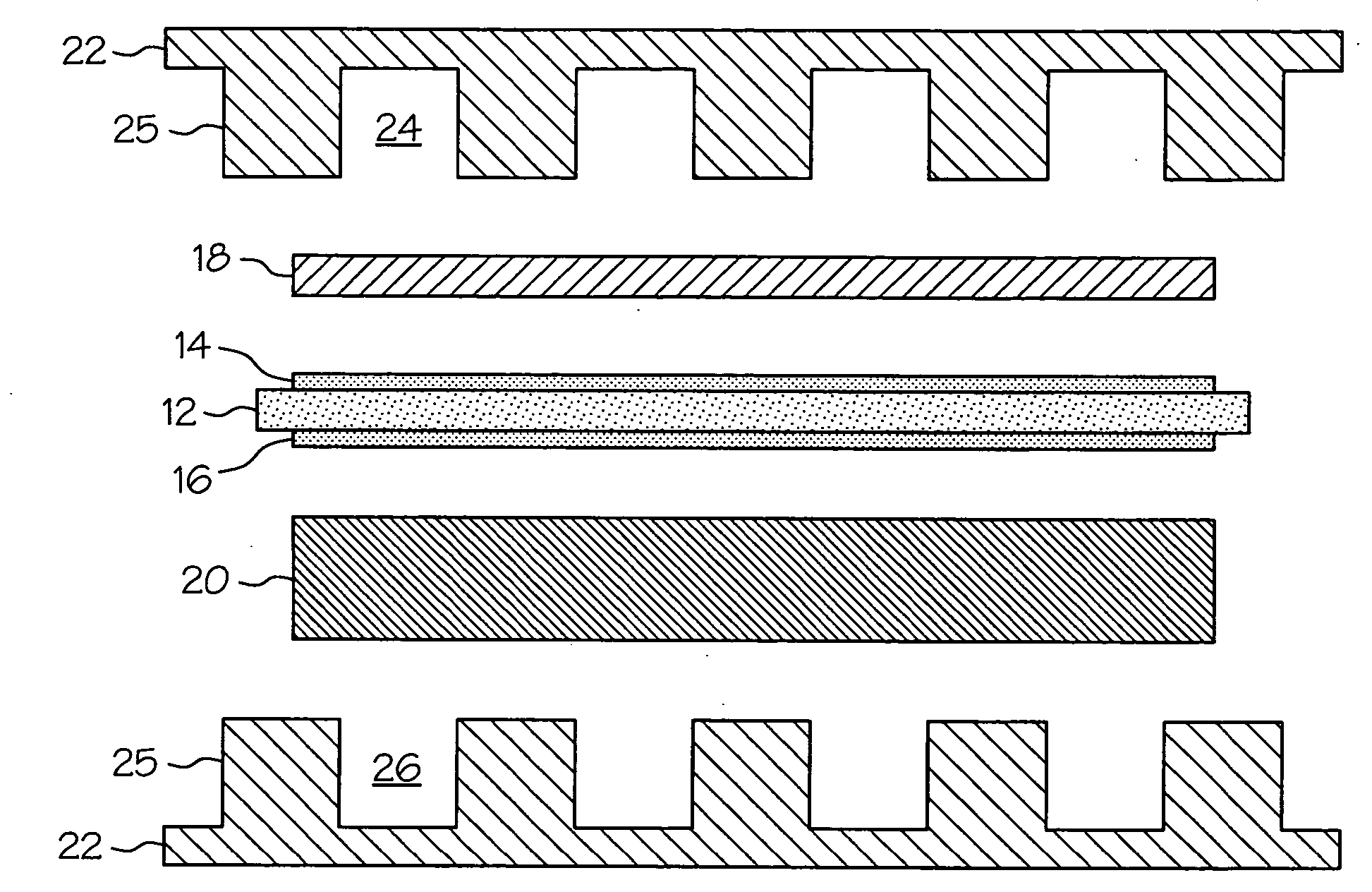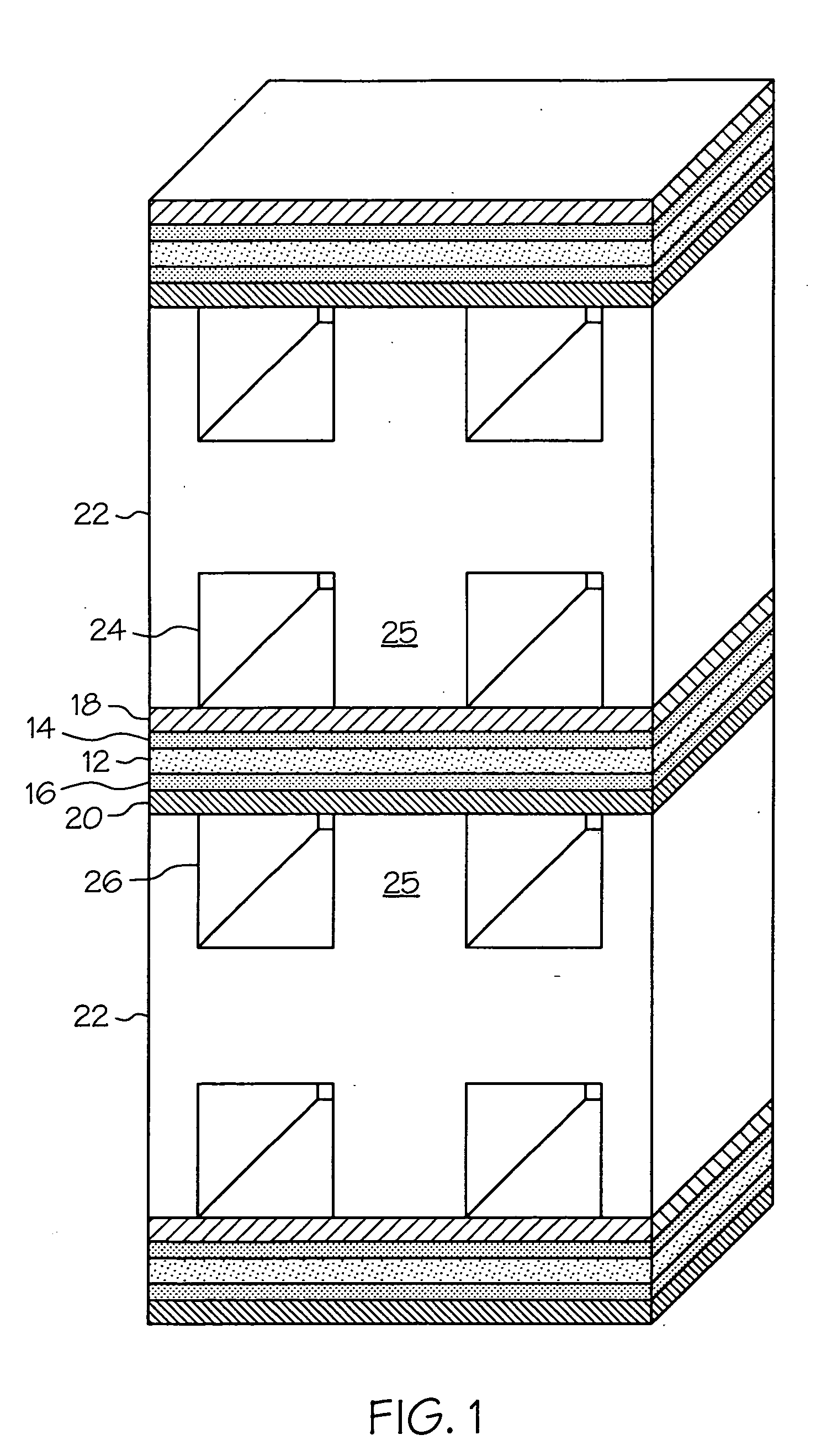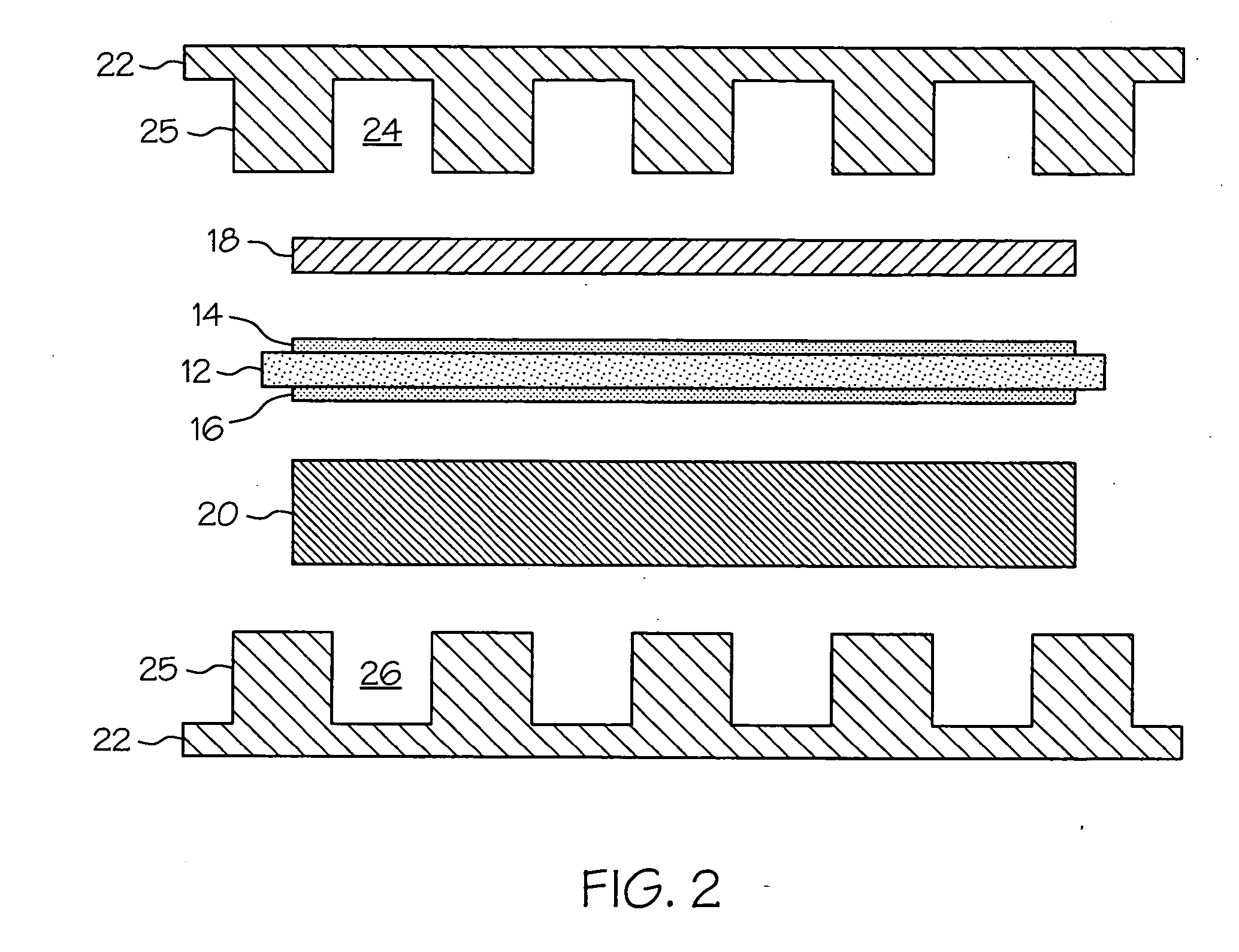Proton exchange membrane fuel cell
a technology fuel cell, which is applied in the field of proton exchange membrane fuel cells, can solve the problems of reducing the overall system efficiency and complex external humidification systems, and achieve the effect of improving the cathode diffusion layer
- Summary
- Abstract
- Description
- Claims
- Application Information
AI Technical Summary
Benefits of technology
Problems solved by technology
Method used
Image
Examples
example 1
[0057]FIG. 3 shows a plot of current density v. thickness of the cathode diffusion layer at a cell potential of 0.6 V for two different levels of external humidification. Each point is time averaged over 3 hours. Table 1 provides the experimental conditions. FIG. 3 shows that the current density increases monotonically with thickness for the range of thicknesses presented. The curve should eventually reach a maximum and then decline at larger thicknesses due to either flooding of the cathode diffusion layer at the interface between the cathode catalyst layer and the cathode diffusion layer, or limited rates of oxygen mass transfer to the cathode. Additional work at higher current densities (>1 A / cm2), which is not presented here, supports the flooding hypothesis.
[0058] The current density increase is approximately 30% for series A (with lower humidity) and 20% for series B (with higher humidity). Thus, the benefits of the thicker diffusion layer are greater at drier conditions.
TA...
example 2
[0059]FIG. 4 compares the average cell performance of a 10-cell stack with thick cathode diffusion layers (840 μm) to that of a 15-cell stack with thin cathode diffusion layers (195 μm) at various humidification levels. Tables 2 and 3 provide the operating conditions.
TABLE 2ParameterSeries AAnode inlet pressure150 kPa (abs)Cathode inlet pressure150 kPa (abs)Fuel composition (dry)65% H2, 35% N2Stoichiometric fuel flow1.3Average coolant temperature78° C.Anode dew pointSee table 3Cathode dew pointSee table 3Current density0.8 A / cm2Electrode area519 cm2
[0060]
TABLE 3TestAnodeCathodepointdew pointdew pointRHexit180491.05273490.95377320.92460641.02573641.11680641.20
[0061] The maximum cell potential achieved by the stack with the thick diffusion layers was significantly better than the stack with the thin diffusion layers. In addition, the performance of the stack with thick diffusion layers improves as the amount of added humidification water decreases. The optimum performance of the sta...
example 3
[0062]FIG. 5 shows the decay of the average cell potential at fixed current densities over longer periods of time at three operating conditions for a 10-cell stack with 840 μm thick cathode diffusion layers. Table 4 provides the operating conditions.
TABLE 4ParameterSeries ASeries BSeries CAnode inlet150 kPa (abs)150 kPa (abs)200 kPa (abs)pressureCathode inlet150 kPa (abs)150 kPa (abs)200 kPa (abs)pressureFuel65% H2, 35% N265% H2, 35% N265% H2, 35% N2composition(dry)Stoichiometric1.31.31.3fuel flowAverage78° C.78° C.78° C.coolant temp.Anode73° C.73° C.73° C.dew pointCathodeDryDryDrydew pointCurrent0.2 A / cm20.8 A / cm20.8 A / cm2densityElectrode519 cm2519 cm2519 cm2areaRate of900 μ V / h720 μ V / h44 μ V / hdeclineRHexit0.820.820.99
[0063] The potential declines at a rate of approximately 1 mV / h at the 150 kPa test points. This indicates that the membrane electrode assemblies are slowly drying at this humidification level. At 200 kPa, the rate of potential decline is more than a factor of 10 l...
PUM
| Property | Measurement | Unit |
|---|---|---|
| water vapor permeance | aaaaa | aaaaa |
| water vapor permeance | aaaaa | aaaaa |
| water vapor permeance | aaaaa | aaaaa |
Abstract
Description
Claims
Application Information
 Login to View More
Login to View More - R&D
- Intellectual Property
- Life Sciences
- Materials
- Tech Scout
- Unparalleled Data Quality
- Higher Quality Content
- 60% Fewer Hallucinations
Browse by: Latest US Patents, China's latest patents, Technical Efficacy Thesaurus, Application Domain, Technology Topic, Popular Technical Reports.
© 2025 PatSnap. All rights reserved.Legal|Privacy policy|Modern Slavery Act Transparency Statement|Sitemap|About US| Contact US: help@patsnap.com



